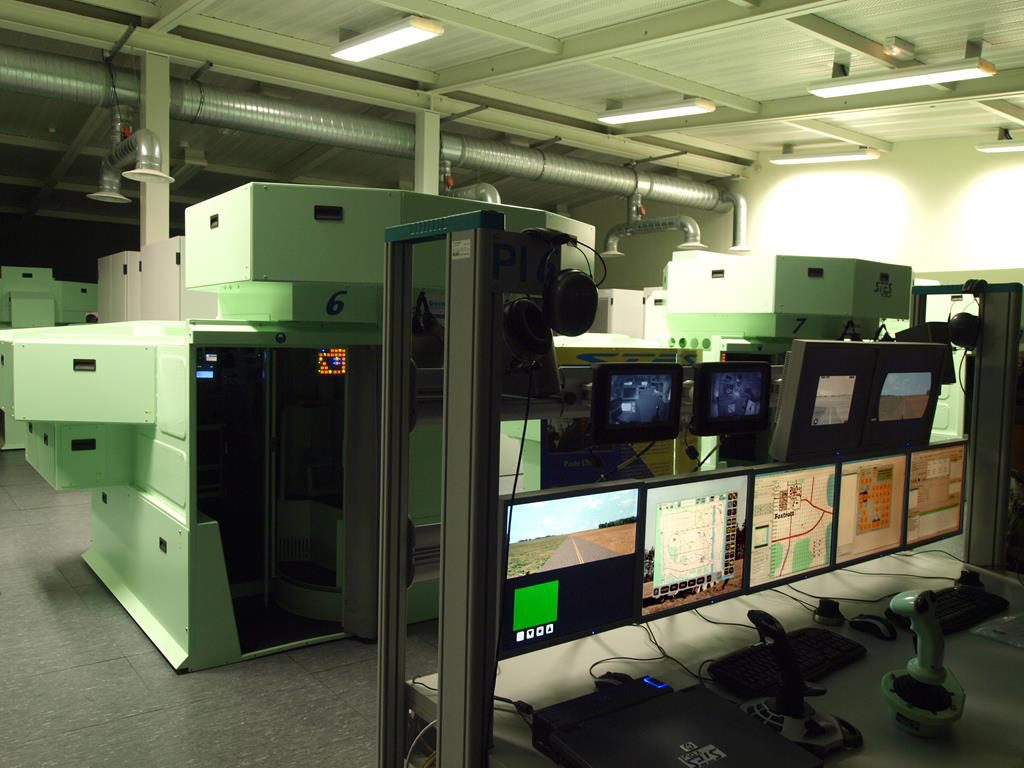RUAG Has doubled its figure since 1999
By Paolo Valpolini & Joseph Roukoz
RUAG Media Day 2017 allowed the company not only to show its successes in the simulation field, but also to do an assessment on what the Swiss industrial defence champion is doing and where it is going.

In his opening remarks Urs Breitmeier, the CEO of the RUAG Group, underlined how the company has doubled its figures since 1999, when it was formed as a private stock corporation, and how much its customer base has evolved. At the end of the XX century sales were around 931 million Swiss Francs, 86% coming from the Department for Defence, Civil Protection and Sport (DDPS), 7% from the rest of Switzerland and only 7% from the rest of the world. With a turnover of 1,858 million Swiss Francs in 2016, only 31% was DDPS related, 6% coming from other Swiss customers, while 63% was due to export customers. With all company shares in the hands of the Swiss Confederation, RUAG remains the partner of excellence for Switzerland in facing technology challenges, such as cybersecurity, a field in which the company is increasing its involvement. On the other hand the group is developing its non-military activities while focusing on three major core businesses, space, air with the aerostructures and the aviation divisions, and land, with its Ammotec and Defence divisions. In the mean time it is aiming at a growth on the international market.

“Looking at the development of our Combat Training Centres, we bid for the service contracts which is bases on service level agreements,” Breitmeier explained, “and we won the five-year contract based on a fixed price, with a agreed yearly rebate.” RUAG CEO underlines how much was done to increase the company productivity: “we adopted for example new procedures in the maintenance field, what we call MRO 4.0, collecting the right data, doing accurate evaluations, and improving prediction on systems behaviour, which brings us to ensure better maintenance at reduced cost and to adopt new repair procedures.”

As said cybersecurity is one of the new fields in which the company is investing. “we believe in the need of data integrity and security to counter hackers activities,” Mr. Breitmeier said, “therefore we established a business unit and we closed the acquisition of Clearswift in the UK, which will be fully integrated in our group within year end.” Without considering such new acquisitions, in 2016 the RUAG Group created around 570 new jobs, the total manpower being now of 8,734 employees, 4,482 of which in Switzerland, Germany being the other nation in which the group has a four-digit number of workers. With the acquisition of the new UK-based cyber company, which brings in over 100 employees, the number of employees in Switzerland will be for the first time lower than that of RUAG’s manpower abroad, a clear index of the internationalisation of the company.

Although happy of the 6.9% increase in revenues in the last year, Urs Breitmeier was adamant in explaining what is worrying him looking at the future, something that was strongly underlined also in its closing remarks at the end of the one-day event in Bure. While in 1999 the company was evolving in a very liberal frame, nowadays political limitations have considerably increased, especially for military export, which makes life difficult for a company which is seeking to increase its presence on the export market to compensate the shrinking national market, due to the considerable reductions carried out in the Swiss military. “Our corporate purpose is to ensure the Swiss Armed Forces are properly equipped,” he said, “however due to the most severe defence export laws we wonder if we will still be able to cope with this role,” Breitmeier said in its conclusions. RUAG cannot even export its products in all NATO countries, Turkey being one example, which might become a problem when becoming part of international cooperation programmes, as the group is not always able to go alone on the market, as its CEO underlined.
Another problem underlined by Mr. Breitmeier is the lack of talents in the Confederation; as an example he explained that every year Swiss universities graduate around 250 Information Technology engineers, but around 200 of them are absorbed immediately by Google, which leaves only 50 for RUAG, which must fight for them with other national industries, thus the need to invest abroad, the Clearswift acquisition being an example. As for the space business the group is investing in the US, the market of excellence in that field, and more specifically it is investing in two manufacturing and one development assets. While it remains among the 10 most attractive Swiss employers, RUAG is waiting some answers concerning its future. “We need to have an answer by the political level on what we must expect in the future, in order to understand if we will be able to maintain our role of key partner of the Swiss military.”


